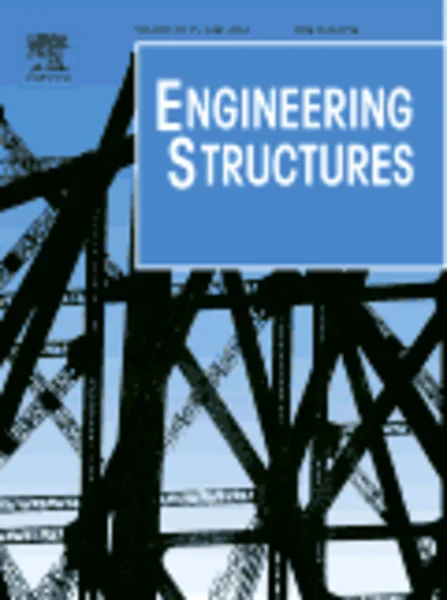-
evaluation of drift demands in existing steel frames under as-recorded far-field and near-fault mainshock–aftershock seismic sequences
جزئیات بیشتر مقاله- تاریخ ارائه: 1392/07/24
- تاریخ انتشار در تی پی بین: 1392/07/24
- تعداد بازدید: 702
- تعداد پرسش و پاسخ ها: 0
- شماره تماس دبیرخانه رویداد: -
this paper presents results of a study aimed at evaluating the effect of aftershocks in steel framed buildings. for that purpose, three frame models representing existing steel moment-resisting frames were subjected to a set of as-recorded mainshock–aftershock seismic sequences. for this purpose, 64 as-recorded seismic sequences registered as a consequence of the 1994 northridge and 1980 mammoth lakes earthquakes were considered in this study. in particular, this investigation employed 14 seismic sequences recorded in 7 accelerographic stations in the near-fault region. an examination of the as-recorded seismic sequences shows that the frequency content of the mainshock and the main aftershock is weakly correlated. the response of the frame models was measured in terms of the peak and residual (permanent) drift demands at the end of the earthquake’s excitation. from the results of this investigation, unlike previous results based on artificial seismic sequences, it was found that as-recorded aftershocks do not significantly increase peak and residual drift demands since the predominant period of the aftershocks (i.e. frequency content) is very different from the period of vibration of the frame models. in addition, it was shown that artificial seismic sequences could significantly overestimate median peak and residual drift demands as well as the record-to-record variability.
مقالات جدیدترین رویدادها
-
استفاده از تحلیل اهمیت-عملکرد در ارائه الگوی مدیریت خلاقیت سازمانی و ارائه راهکار جهت بهبود
-
بررسی تاثیر ارزش وجوه نقد مازاد بر ساختار سرمایه شرکت های پذیرفته شده در بورس اوراق بهادار تهران
-
بررسی تأثیر سطح افشای ریسک بر قرارداد بدهی شرکت های پذیرفته شده در بورس اوراق بهادار تهران
-
بررسی تأثیر رتبه بندی اعتباری مبتنی بر مدل امتیاز بازار نوظهور بر نقد شوندگی سهام با تأکید بر خصوصی سازی شرکت ها
-
تأثیر آمیخته بازاریابی پوشاک ایرانی بر تصویر ذهنی مشتری پوشاک ایرانی (هاکوپیان)
-
بررسی صفات نفس در عرفان اسلامی با تکیه بر دیدگاه عزالدّین محمود کاشانی
-
پیش بینی تعداد درخواست های انجام وارانتی با توجه به انجام نگهداری و تعمیرات به صورت میانی
-
رابطه افسردگی اساسی با بحران هویت در کودکان پیش دبستانی
-
effect of h2o on catalytic performance of manganese oxides in no reduction by nh3
-
stacked micro heat exchange system for optimized thermal coupling of microtegs
مقالات جدیدترین ژورنال ها
-
مدیریت و بررسی افسردگی دانش آموزان دختر مقطع متوسطه دوم در دروان کرونا در شهرستان دزفول
-
مدیریت و بررسی خرد سیاسی در اندیشه ی فردوسی در ادب ایران
-
واکاوی و مدیریت توصیفی قلمدان(جاکلیدی)ضریح در موزه آستان قدس رضوی
-
بررسی تاثیر خلاقیت، دانش و انگیزه کارکنان بر پیشنهادات نوآورانه کارکنان ( مورد مطالعه: هتل های 3 و 4 ستاره استان کرمان)
-
بررسی تاثیر کیفیت سیستم های اطلاعاتی بر تصمیم گیری موفق در شرکتهای تولیدی استان اصفهان (مورد مطالعه: مدیران شرکتهای تولیدی استان اصفهان)
-
جداسازی و شناسایی باکتری های مقاوم به کروم از رودخانه سلطان آباد شیراز
-
کاربرد تئوری مبتنی بر عامل در طراحی پوسـته های هوشمند
-
کنترل استرس حرارتی با استفاده از روش ahp ، در مجتمع مس شهید باهنر کرمان
-
امکان سنجی راهبرد اسکان مجدد سکونت گاه های روستایی کوچک و پراکنده
-
road accidents prediction with multilayer perceptron mlp modelling (case study: roads of qazvin, zanjan and hamadan)




سوال خود را در مورد این مقاله مطرح نمایید :